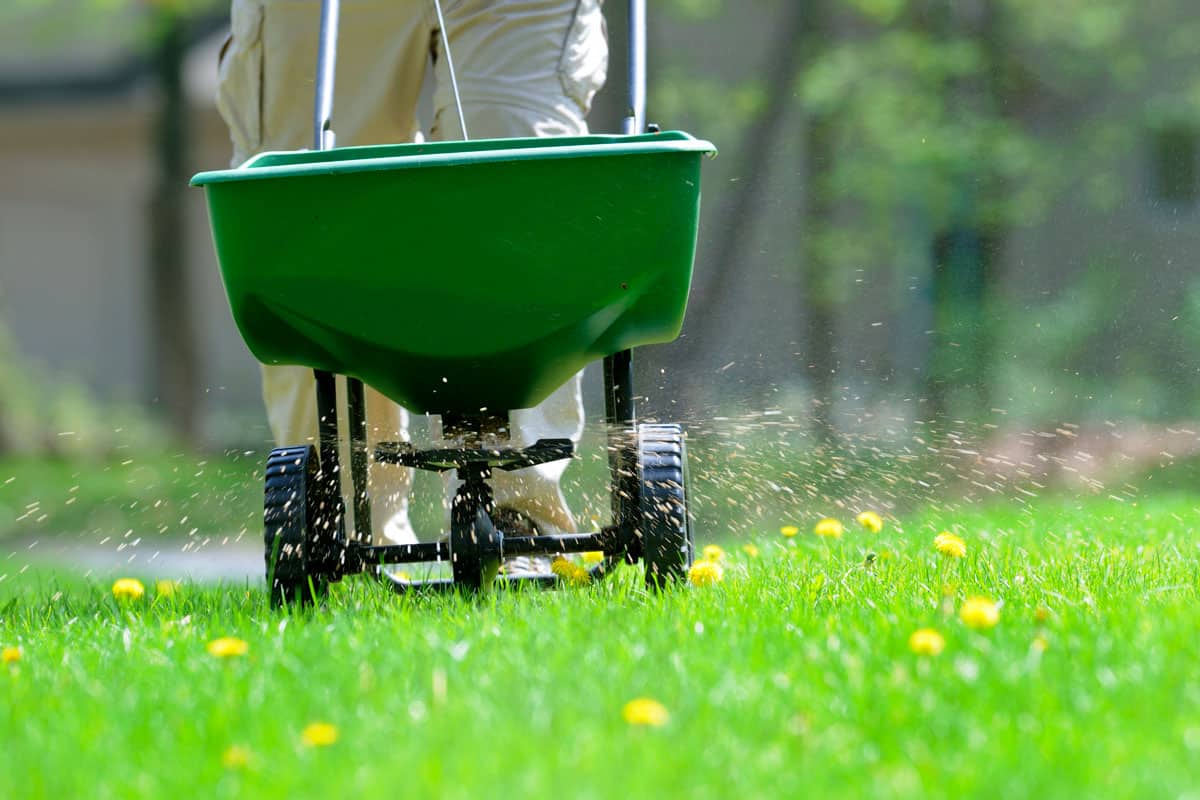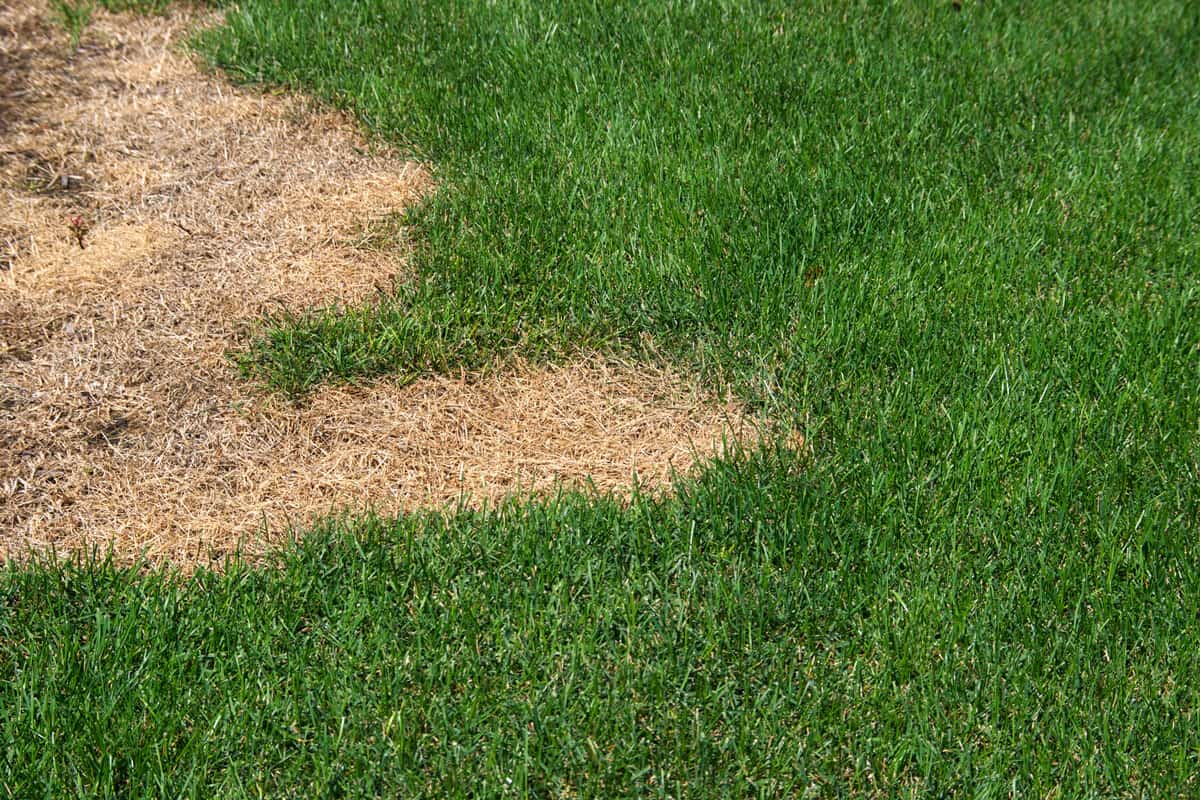Figuring out the best ways to manage your lawn can sometimes feel impossible. Do you think it's time to pull up the dead sections of your grass but don't know how to get this done? Is it a good idea to remove dead grass? We'll cover these questions and others throughout this post. Let's begin!
Pulling up/removing dead grass before planting new seeds is generally a good idea. When your lawn becomes filled with dying or dead blades, this can take away nutrients from other healthy sections.
Therefore, we recommend raking away the dead sections of grass and removing the excess blades with a lawn mower, by hand, or even using an outdoor vacuum.
The key is having your land as healthy as possible before reseeding, ensuring your new lawn grows healthy and lush.
As we start, we will cover all things grass and discuss when and how to remove dead areas. Whether you need to reseed before the spring or need some maintenance assistance, we're here to help. With that said, let's dive head first into this topic!
![Green lawn with dead spot, Should You Pull Up Dead Grass? [Best Ways To Do It!]](https://gardentabs.com/wp-content/uploads/2022/09/Should-You-Pull-Up-Dead-Grass-Best-Ways-To-Do-It.png)
Do I Need To Remove Dead Grass Before Reseeding?
Yes! Considering that a build-up of dead grass can cause the ground to be less nutrient, you'll want to pull/remove any dying or dead sections ASAP.
As we mentioned, dead sections of your lawn aren't contributing to it but are sucking away its overall health and nourishment.
That can become a major issue for actively growing, healthy grass, so you want to handle this as soon as possible. Especially if you want to plant seeds, removing any dead or unhealthy grass is essential.
Luckily, this is pretty easy as you can do it with a lawn mower, by raking, or even with an outdoor vacuum. Moreover, if you don't mind breaking a sweat, you can manually remove dead grass by pulling it from the soil.
Again, there isn't one set way to do this, so feel free to take the reigns.

When Should You Remove Dead Grass?
In general, the best time to remove dead grass from your yard is right as the spring hits. Depending on where you live, this could be around mid-April or a bit earlier for warmer climates.
You also want to ensure that the weather remains nice before, during, and after your grass removal. Waiting until your lawn is green can help you find the problem spots, to avoid removing healthy turf.
In addition, you want to rake your grass before getting started. Doing this will help loosen the soil and any dead blades from their current position.
Many experts refer to dead grass as a "barrier," keeping sunlight from reaching healthy grass and soil directly below.
Therefore, you want to try and remove any sick or dying sections of your lawn before the spring/summer growing season kicks into high gear.
Is It Better To Remove Dead Grass By Hand?
Although you can remove grass by hand, doing this isn't always efficient. Especially if your lawn has multiple areas with dead or dying blades, manually pulling the grass could take all day.
Instead, starting with a rake is generally easier to loosen the ground up. Next, grab a lawn mower or outdoor vacuum to remove the excess dead grass.
From there, you can manually pull the grass that's left over, which shouldn't take much time. As we said, it's ideal to wait until springtime before removing grass so you know exactly what sections are dead.
Sometimes in colder regions, your entire lawn can look awful until mid-late spring and become gorgeous and green within weeks.
What Is The Easiest Way To Remove Dead Grass?
The easiest way to remove dead grass is using a shovel for smaller sections and a motorized sod cutter or rototiller for larger plots of land.
Remember, you must prep the ground before pulling dead grass, which is easily done with a rake. From there, you can use your motorized tool to remove the dead or dying blades from the soil.
Some garden experts even recommend mechanical rakes for large sections of lawns, so this can always become easier with the help of technology.
The key is trying to leave the healthy grass untouched/unbothered during the removal process. You don't want to try and make your lawn prettier and end up killing the entire plot of land.
Greenworks 10 Amp 14" Corded Electric Dethatcher
This dethatcher is stainless steel material, has corded electric power, has a 14-inch dethatcher, can adjust to three height positions, features a powerful 10-amp motor, and comes in green.
View this dethatcher on Amazon here.
Will Dead Grass Grow Back?

No. Unfortunately, once your grass dies, it will not grow back. Of course, you want to consider the time of year, as certain grasses go through winter dormancy.
So, if you have grass more prone to thinning during the winter, that doesn't always mean you need to start worrying. Again, this all comes down to your location and year-round weather.
The best way to solve this is to wait until the spring, see which areas of grass turn green, and remove the ones that do not.
Then you know whether the grass is entirely dead or simply dormant and waiting for the sun!
Some examples of grasses that go dormant in the winter include:
- Bahia grass
- Bermuda grass
- Centipede grass
- St. Augustine grass
- Zoysia grass
So, if you have any of these grasses and notice them turn brown during the colder months, this is entirely normal and should subside once the temperatures rise.
What Grass Stays Green All Year?
For anyone wanting to have their grass stay green throughout the year, we recommend choosing fescue or Bermuda grass varieties.
As we said, there are some situations where Bermuda grass can become discolored in extreme cold, but if you're somewhere with moderate winters, your grass should remain lush.
On the other hand, Bermuda grass also tolerates high heat well, making it perfect for hotter climates. Fescue doesn't always respond as well to extreme heat, so that's something to remember.
You have to also consider the climate where you are. Let's say you live in Arizona or Nevada, where the winters aren't extreme by any means.
Planting grass like Bermuda would be your best bet.
In contrast, fescue is the route to take if you live somewhere like Washington or Oregon and want your grass to stay pretty green year-round.
Again, Bermuda is more of a warm-season variety, while fescue works well for cooler-season conditions.
How Often Should You Fertilize Grass?

One of the many reasons people opt for faux grass is the fertilizing and care schedule. Generally, you should feed grass between five and six times yearly, which can become a lot of extra work.
Again, you don't always need to fertilize so frequently, but to have lush, green grass, doing this is somewhat mandatory.
For example, cool-season grasses respond well to being fertilized less often than warm-season grasses, as they won't always go through such a dramatic dormancy.
So, if it's springtime and your cool-season lawn looks okay, you can skip that feeding.
It's also not always a good idea to fertilize grass too often, as this can burn its roots. Like any plant, using strong products on them and the surrounding soil can become an issue over time.
So, we recommend aiming for one fertilization each season and going up from there.
What Is The Best Type Of Fertilizer For Grass?
Usually, the best fertilizers are the ones with natural ingredients. One of the main reasons you feed your lawn is to supplement micronutrients it may not have enough of.
Therefore, your product should contain nitrogen, phosphorus, and potassium, as they will aid in healthier, greener grass—furthermore, the fewer additives, the better for all types of grasses.
One brand that stands out is Dr. Earth, as they make a 'Super Natural Organic Fertilizer,' which contains the micronutrients we listed above and is free from chemicals.
Formula-wise, you should also lean towards liquid fertilizer if your grass needs quick feeding and granular options for longer-term fertilization.
This depends on how fast you want the nutrients to reach your grasses' roots.
Dr. Earth Super Natural Liquid Lawn Fertilizer
This plant food has a 100% sustainable formula, covers up to 1,200 square feet, is liquid, is safe around children and pets, and comes in a 32-ounce bottle.
Check out this organic fertilizer on Amazon.
Is It Hard To Grow And Maintain Grass?

Depending on where you live, it can be rather tricky to grow and maintain a lawn. Whether you're somewhere super cold or extremely hot and dry, grass can be temperamental.
As we said, wide grass varieties will go through winter dormancy; during this time, they'll turn brown and stop growing.
On the other hand, if you have moderate winters but super hot summer weather, your grass can also go through a less productive period.
One of the reasons so many people choose fake grass is because it saves water, time, and product. Again, it won't feel the same, but from an environmental standpoint, it does make more sense for most climates.
To Wrap Up

Whether you have grass growing or it's wintertime, you want to prepare it for the growing season. From what we found, you should pull or remove dying or dead grass from the soil and then reseed it.
Generally, you can do this using a rake, mower, outdoor vacuum, or your hands. However, we don't recommend manually pulling entire sections of the lawn as this can be time-consuming.
Again, it's entirely normal for warmer-season grasses to turn brown in the winter, so don't pull anything from the soil until around mid-April!
Made it this far? Check out these other related plant posts!
Ornamental Grasses For Full Sun In Pots [15 Ideas For Your Landscaping]


